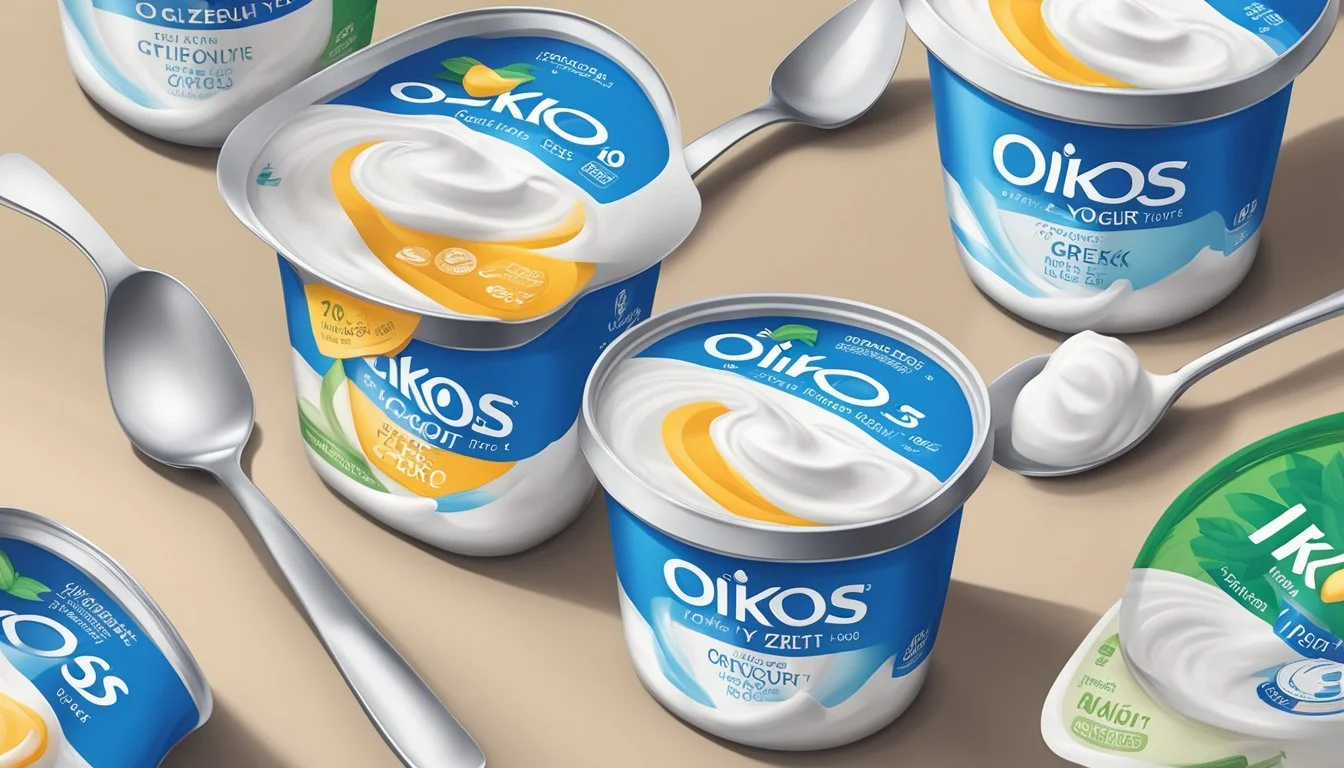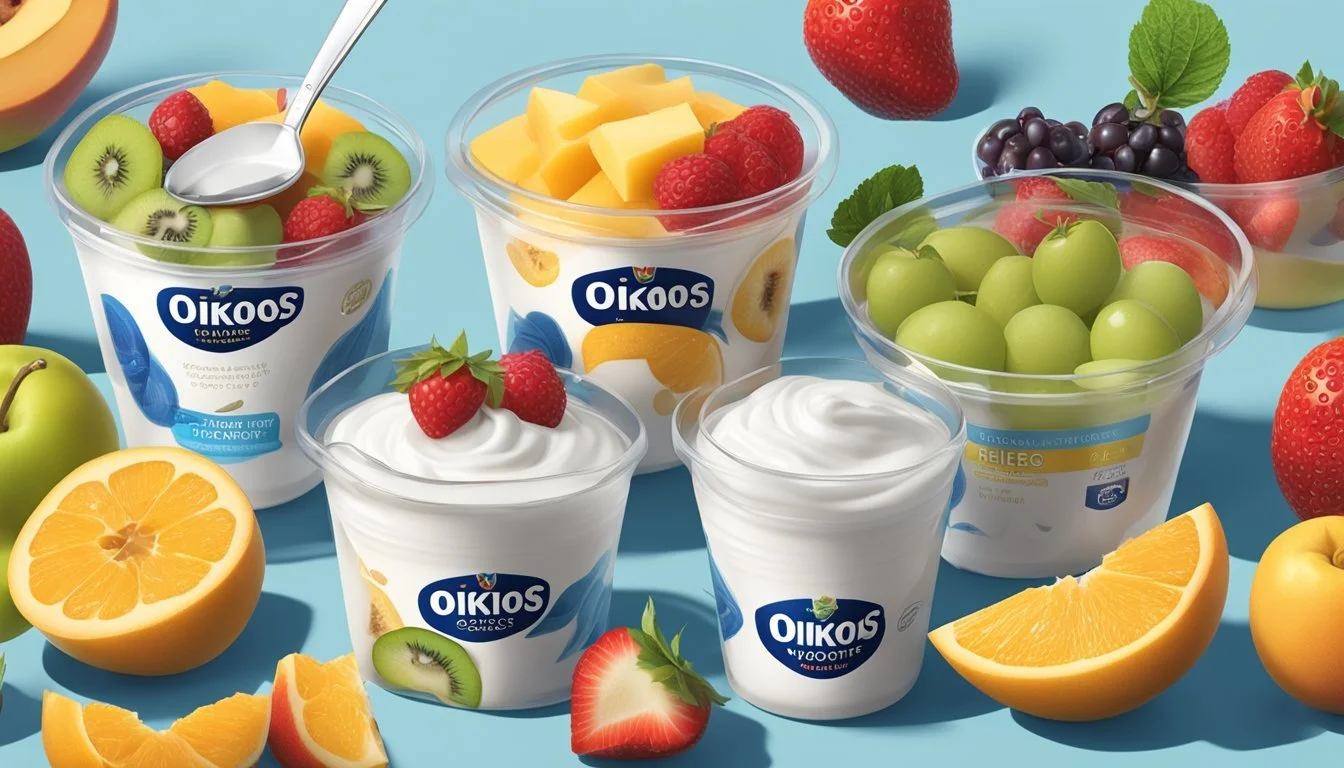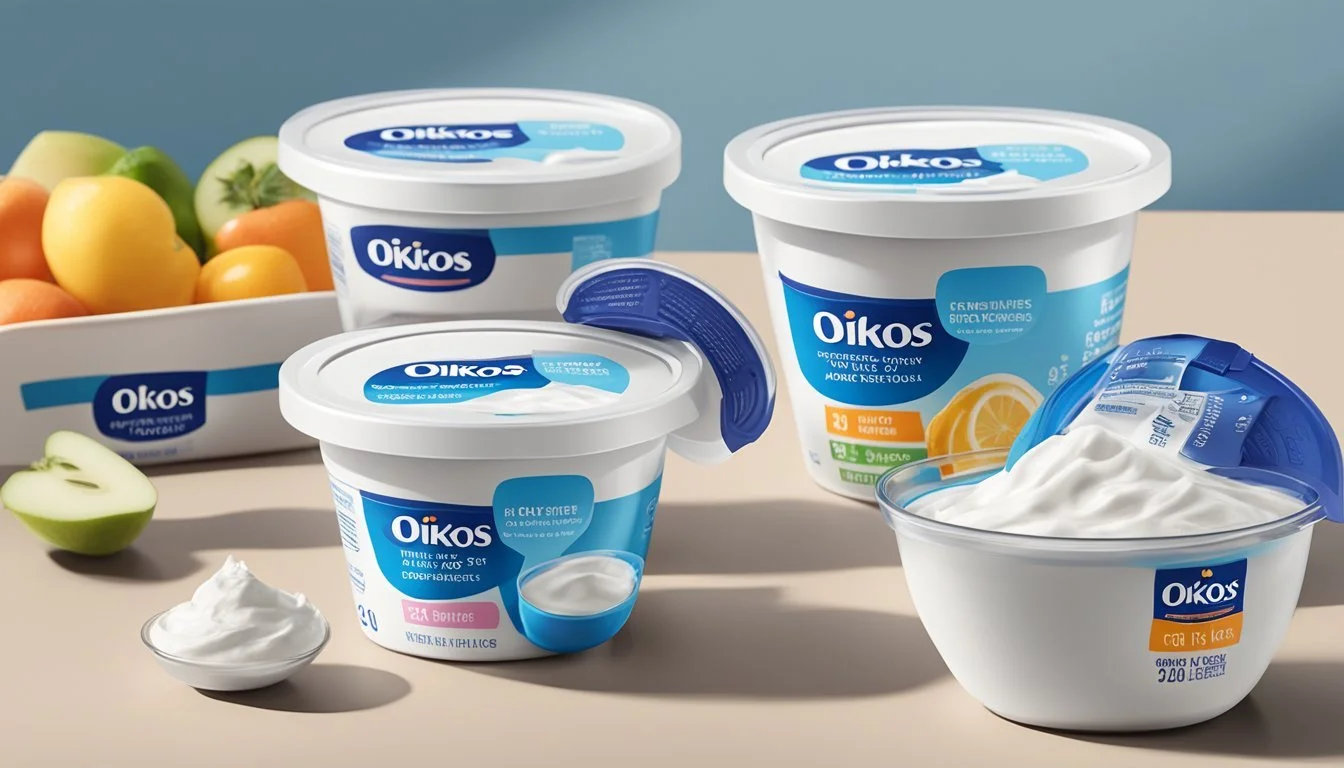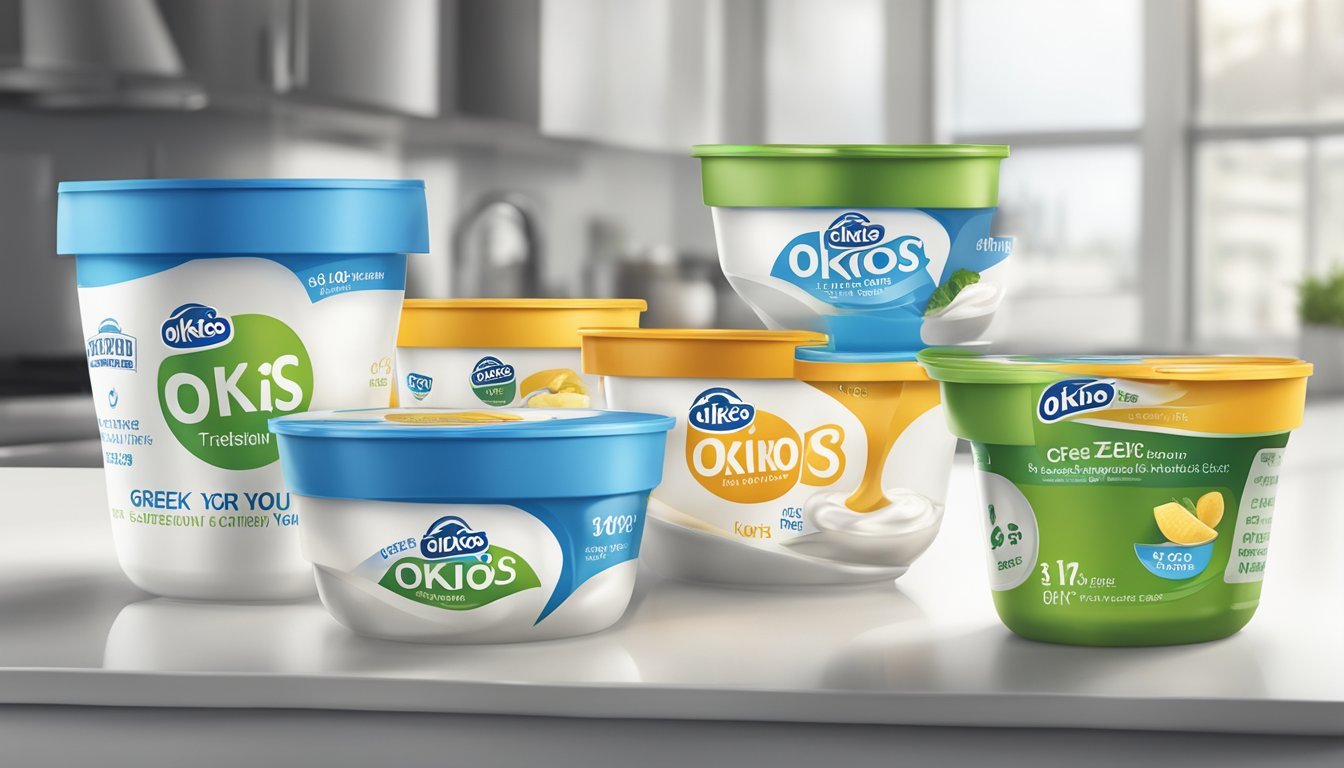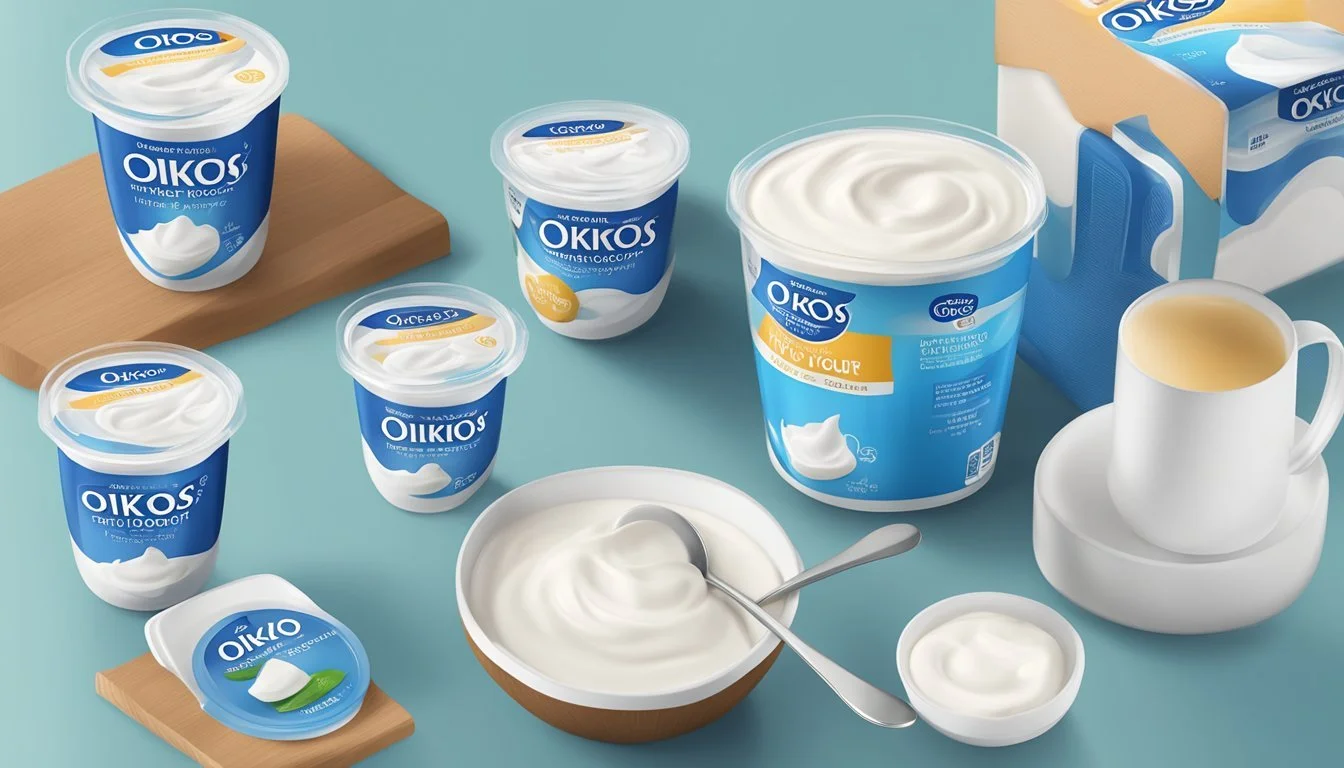How Many Servings of Oikos Triple Zero Greek Yogurt Per Day Exceed Recommended Intake?
Determining the optimal daily intake of Oikos Triple Zero Greek yogurt involves understanding nutritional content and individual dietary needs. Oikos Triple Zero Greek yogurt is a popular choice for health-conscious individuals due to its high protein content and lack of added sugars, artificial sweeteners, and fats. Each 5.3 oz. serving contains 15 grams of protein, which contributes to muscle repair and growth, making it a valuable addition to various diet plans.
However, as with any food product, consuming Oikos Triple Zero yogurt in moderation is key to maintaining a balanced diet. The specific number of servings that may be deemed excessive can vary depending on an individual's overall nutritional requirements, physical activity level, and health goals. It's important to consider the yogurt within the context of one's daily calorie and macronutrient intake targets to avoid potential dietary imbalances.
While the protein-rich and zero-fat profile of Oikos Triple Zero can be advantageous, it's essential to not overlook other nutrients and to ensure a varied diet that includes a wide range of vitamins and minerals from multiple food sources. This approach prevents over-reliance on a single food item and promotes overall nutritional adequacy, supporting long-term health.
Oikos Triple Zero Greek Yogurt Overview
Oikos Triple Zero Greek Yogurt is a nonfat dairy product designed for health-conscious individuals. It provides an impressive amount of protein without added sugars or artificial sweeteners, catering to those who seek nutrients without excess calories.
Nutritional Profile
Serving Size: 5.3 oz (150g)
Nutrient Amount per Serving % Daily Value* Calories -- -- Total Fat 0g 0% Saturated Fat 0g 0% Trans Fat 0g -- Cholesterol -- -- Sodium -- -- Total Carbohydrate -- -- Dietary Fiber -- -- Total Sugars 0g -- Added Sugars 0g 0% Protein 15g -- Vitamin D -- % -- Calcium -- -- Iron -- -- Potassium -- --
*Percent Daily Values are based on a 2,000 calorie diet. Your daily values may be higher or lower depending on your calorie needs.
Each serving of Oikos Triple Zero Greek Yogurt typically contains around 15 grams of protein, which is essential for muscle repair and growth. It does not contain saturated fat or cholesterol, positioning it as a heart-healthy option. The yogurt also contributes to a person's calcium and Vitamin D intake, supporting bone health.
Ingredient Breakdown
The primary ingredient in Oikos Triple Zero Greek Yogurt is cultured grade A nonfat milk. This is consistent with most Greek yogurts, which require milk for their production. To sweeten the yogurt naturally without the use of added sugars, stevia leaf extract is used. This is a zero-calorie sweetener derived from the leaves of the stevia plant. The inclusion of natural flavors helps enhance the taste without compromising the nutritional value. The product also contains sea salt, which adds to the flavor while regulating the sodium content.
Oikos Triple Zero Greek Yogurt differentiates itself by omitting added sugars and artificial sweeteners, aligning with dietary guidelines that recommend limiting these ingredients. Its sweet taste is achieved through natural sources, maintaining its nutritional integrity. This yogurt may also contain life and active cultures, which can contribute to gut health.
Daily Yogurt Intake Recommendations
Evaluating the correct amount of Oikos Triple Zero Greek yogurt to consume involves understanding serving sizes and its role in daily nutrition. This section will guide readers through the nuances of serving recommendations and nutritional value.
Understanding Serving Sizes
A single serving of Oikos Triple Zero Greek yogurt is typically 5.3 ounces. This serving size contains 90 calories and 15 grams of protein, contributing to the overall daily value of nutrients one needs. It's important to interpret nutrition facts on the packaging which usually state the servings per container and % daily value based on a 2,000 calorie diet.
Role of Yogurt in Daily Nutrition
Yogurt can be a beneficial part of a balanced diet, contributing valuable nutrients such as calcium, protein, and probiotics. The protein content in Oikos Triple Zero is particularly substantial, assisting in meeting one's daily protein requirements. However, the recommended daily amount of yogurt varies by individual needs but generally falls within the range of 16-24 ounces per day, which translates to about two to three servings. This fits within most calorie-controlled diets, provided there's a balance with other foods to meet remaining daily values for nutrition.
Health Benefits and Considerations
When considering the consumption of Oikos Triple Zero Greek yogurt, it is important to examine both the health benefits it offers and the potential risks associated with excessive intake.
Yogurt's Impact on Health
Oikos Triple Zero Greek yogurt is rich in protein, with approximately 15 grams per serving, making it a useful addition to one's diet for muscle maintenance and growth. Additionally, it is a notable source of nutrients such as calcium and potassium, which are vital for bone health and blood pressure regulation respectively. As a low-calorie food with no added sugars, it can be a beneficial part of a heart-healthy diet. This yogurt also provides a modest amount of dietary fiber, contributing to digestive health, and includes essential vitamins and minerals necessary for overall wellness.
Nutrient Amount per Serving Protein 15g Fiber 3g Calcium 15% DV Potassium -- Total Fat 0g
Potential Risks of Excessive Consumption
Excessive consumption of any food product, including Oikos Triple Zero Greek yogurt, can lead to potential health risks. This yogurt has minimal total fat and no trans fat, but it is still possible to overconsume. Overeating can negate the benefits of a low-calorie food by contributing to weight gain. Furthermore, despite being sugar-conscious, it contains natural sugars that must be accounted for within one’s total daily intake to manage blood sugar levels. It should be noted that too much dietary calcium might also pose risks to heart health contrary to its benefits when consumed in moderation. Lastly, individuals must ensure they consider their own nutritional needs and restrictions; for example, those with dairy sensitivities or allergies should approach with caution.
Dietary Context and Limitations
When incorporating Oikos Triple Zero Greek yogurt into the diet, one must consider dietary limitations and the balance of nutrients from varying food sources.
Allergen and Dietary Information
Oikos Triple Zero Greek yogurt is a nonfat dairy product, which presents clear dietary information crucial for individuals with specific dietary needs. The yogurt lacks fat, including saturated fat, and does not contain added sugars or artificial sweeteners. However, it still contains milk, which is a common allergen. For those with lactose intolerance or a milk allergy, consuming this product could lead to adverse reactions. Additionally, dairy products naturally contain cholesterol and sodium, making the yogurt potentially unsuitable for individuals managing these dietary components.
Key Nutrients Per Serving in Oikos Triple Zero Greek Yogurt:
Cholesterol
Sodium
Dietary Fiber: absent
Added Sugars: 0g
Balancing Yogurt with Other Foods
The yogurt should be balanced with other foods to ensure a diverse intake of essential nutrients. Given the nonfat characteristic of Oikos Triple Zero, incorporating sources of healthy fats into one's diet is important to manage overall fat intake. Foods rich in dietary fiber, vitamins, and minerals should also complement the high-protein yogurt to achieve a well-rounded diet.
Recommended Foods to Include for Nutrient Balance:
Healthy fats: avocados, nuts, seeds, olive oil
High-fiber foods: whole grains, legumes, fruits, vegetables
Individuals should be mindful not to exceed the quantity of yogurt that pushes their daily caloric or sodium intake beyond recommended limits. It's a nutritious option as part of a balanced diet but should be consumed in moderation.
Yogurt Usage and Alternatives
When considering the intake of Oikos Triple Zero Greek yogurt, individuals should pay attention to their overall diet and nutritional needs. This section delves into how one can incorporate Greek yogurt into their daily meals and provides substitutions for those with specific dietary restrictions.
Incorporating Yogurt into Meals
Greek yogurt, particularly varieties like Oikos Triple Zero High Protein Nonfat Greek Yogurt, can serve as a versatile ingredient in daily meals. For example, integrating vanilla flavored Oikos Triple Zero into breakfast, it can be mixed with high-fiber foods such as berries and nuts to create a balanced meal. The yogurt itself contains no added sugars, artificial sweeteners, or fat and provides a significant amount of protein, with 15 grams per 5.3 oz serving. In savory dishes, Greek yogurt can act as a healthier substitute for sour cream or mayonnaise. Ingredients like lemon juice concentrate or sea salt can be added for extra flavor.
Ingredients: Non-fat milk, yogurt cultures (S. thermophilus and L. bulgaricus), high-protein content, natural flavors.
Content: 0 added sugar, 0 artificial sweeteners, 0 fat.
Carbohydrate: Controlled levels, primarily from the lactose in non-fat milk.
It is also essential to consider the carbohydrate content in meal planning, particularly for those monitoring their intake for health reasons.
Substitutions for Dietary Restrictions
For individuals who cannot consume certain ingredients found in Oikos Triple Zero Greek Yogurt, such as yogurt cultures or ultra-filtered milk, or prefer not to use products with tapioca starch or specific natural flavors, there are substitutions available.
Dairy-Free Alternative: Coconut or almond-based yogurts can be suitable for those avoiding dairy. Check the protein content as it may be lower than that found in Greek yogurt.
Sugar Control: Search for brands that use alternative sweetening agents like stevia if avoiding specific sweeteners like sucralose or acesulfame potassium is necessary.
High-Fiber Needs: Incorporate additional fiber into the meal by adding chia seeds or flaxseeds to the yogurt substitute.
With regard to flavor, for options like lemon juice or vanilla, mimic these tastes using natural extracts or zest in the non-dairy alternatives to achieve a similar profile to the Oikos Triple Zero or Blended Nonfat Greek Yogurt varieties.
Consumer Guidance
Determining the appropriate number of servings of Oikos Triple Zero Greek yogurt one should consume daily involves understanding nutritional content and aligning it with individual dietary needs. This section will outline how to read nutrition labels and calculate daily nutrient intake.
Reading Nutrition Labels
Consumers should look at the serving size and % daily value when reading nutrition labels. Oikos Triple Zero Greek yogurt typically provides 15 grams of protein per 5.3 oz. cup and contains no fat, saturated fat, trans fat, cholesterol, or added sugars. A single serving also contains 90 calories, 55-60mg of sodium, and some calcium, vitamin D3, and potassium, which are essential nutrients.
Here is a breakdown of the nutritional details per serving:
Nutrient Amount % Daily Value* Calories 90 Total Fat 0g 0% Saturated Fat 0g 0% Trans Fat 0g Cholesterol 10mg 3% Sodium 55-60mg 2%-3% Total Carbohydrate 6g 2% Dietary Fiber 0g 0% Total Sugars 0g Includes Added Sugars 0g 0% Protein 15g Vitamin D3 Varies Calcium Varies Iron Varies Potassium Varies
*Based on a 2,000 calorie diet.
Calculating Your Daily Nutrient Intake
To manage one's daily nutrient intake, consumers should tally the nutrients from all food consumed throughout the day and compare it to the recommended daily values. For instance, based on a 2,000 calorie diet, an adult should aim for approximately 50 grams of protein. Therefore, consuming more than three servings of Oikos Triple Zero Greek yogurt would exceed the recommended daily protein intake. It is also crucial to balance the intake of other nutrients such as sodium, potassium, and calcium, and to ensure the overall diet is varied and includes other food groups.
FAQs and Common Concerns
In exploring the recommended consumption of Oikos Triple Zero Greek yogurt, this section addresses frequently asked questions and corrects common misconceptions. It aims to provide clear guidance on the product's nutrient content and recommended intake.
Addressing Frequent Queries
How much Oikos Triple Zero Greek yogurt can one consume daily?
A single serving of Oikos Triple Zero Greek yogurt is typically 5.3 ounces, and it contains significant amounts of protein and calcium. The exact number of daily servings will depend on individual dietary needs and total daily calorie and nutrient intake.
What are the nutritional benefits of Oikos Triple Zero Greek yogurt?
Oikos Triple Zero is notable for having 0% fat, 0g added sugar, and 0 artificial sweeteners. Each serving provides protein, calcium, vitamin D, and potassium, which are essential for various bodily functions.
Clarifying Misconceptions
Is Oikos Triple Zero Greek yogurt free of sugar?
While it contains no added sugars, Oikos Triple Zero may still have naturally occurring sugars from milk. Consumers should be aware that "0g added sugars" does not mean the product is sugar-free.
Does Oikos Triple Zero Greek yogurt have artificial sweeteners or flavors?
Oikos Triple Zero is marketed as having 0 artificial sweeteners. It may include natural flavors to enhance taste without adding extra calories or sugars.
Conclusion
When considering the consumption of Oikos Triple Zero Greek yogurt, it is essential to factor in individual nutritional needs and overall diet. This product offers a significant protein boost with 15 grams per 5.3-ounce serving, and its formulation without added sugars or artificial sweeteners can be a beneficial choice for those managing their sugar intake.
Consuming this yogurt as part of a balanced diet can contribute positively to one's health. However, as with any food, moderation is key. The recommended dietary guidelines suggest that adults require about 46 to 56 grams of protein per day, which should come from a variety of sources for optimal nutrition. Hence, one to two servings of Oikos Triple Zero could fit well within these guidelines, depending on other sources of protein and individual health goals.
Nutrient Per Serving (5.3 oz) Protein 15g Calories ~120 Sugar 6g Fat 0g
Individuals with specific dietary restrictions or health conditions should consult with a healthcare provider to tailor their protein and dairy intake accordingly. Those with kidney issues, for example, may need to limit their protein consumption.
Inclusion of Oikos Triple Zero within a diverse and balanced diet can certainly be part of a healthy lifestyle. Consumers are advised to pay close attention to their body's response and adjust their intake based on personal health goals and dietary needs.


